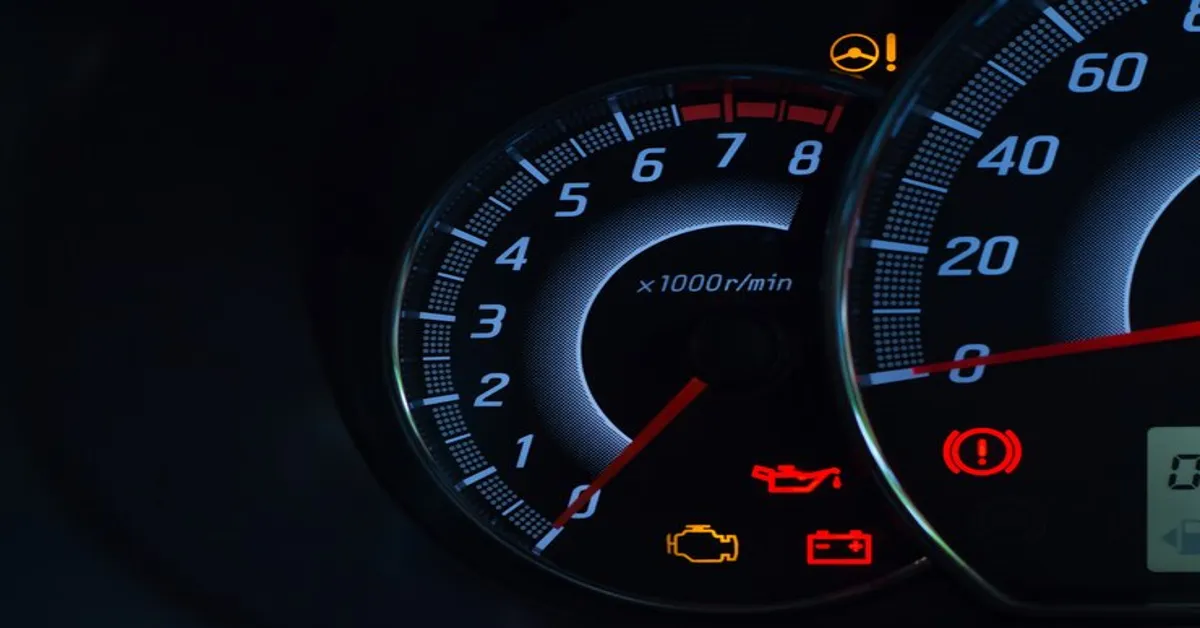A flashing check engine light is not a mere suggestion — it’s a warning that your vehicle may be experiencing an urgent, potentially engine-damaging malfunction. Unlike a steady check engine light that can often signal non-urgent issues, a flashing light typically means a severe misfire or an immediate threat to your catalytic converter. Drivers encountering this in 2025 must not ignore it: continuing to drive could mean turning a small repair into a complete engine overhaul. This article will walk you through what causes a flashing light, what to do immediately, and how this symbol has evolved alongside automotive tech.
The Check Engine Light: More Than a Symbol
The check engine light (CEL), formally known as the Malfunction Indicator Lamp (MIL), became standard on most U.S. vehicles in the mid-1990s with the introduction of OBD-II (On-Board Diagnostics II) systems. While a steady CEL could be triggered by an emissions issue or a loose gas cap, a flashing check engine light is designed to get your attention immediately.
By 2025, car systems have grown far more complex, with sensors, AI-driven diagnostics, and even cloud-connected alert systems. Yet, the flashing check engine light remains a critical universal indicator across combustion, hybrid, and even plug-in hybrid models.
Why the Check Engine Light Flashes: Immediate Culprits
There are several key reasons your CEL might flash — and they all merit immediate attention.
Common Causes of a Flashing Check Engine Light
- Engine Misfire
A misfire occurs when one or more cylinders fail to fire correctly, often due to spark plug, ignition coil, or fuel injector failure. The unburned fuel can overheat and damage your catalytic converter. - Catalytic Converter Damage
When misfires go unchecked, unburned fuel reaches the catalytic converter, which is not built to process raw fuel. This leads to overheating and irreversible damage. - Ignition System Failure
Faulty spark plugs, coil packs, or ignition control modules can cause incomplete combustion cycles, leading to a misfire and CEL flashing. - Fuel Delivery Problems
Clogged fuel injectors, bad fuel pumps, or incorrect fuel pressure disrupt the air-fuel mixture necessary for combustion. - Sensor Failure
Failing crankshaft or camshaft position sensors send inaccurate timing signals to the engine control unit (ECU), triggering misfires. - ECU Fault or Software Glitch
While rare, faulty ECU logic or outdated firmware may cause the CEL to flash erroneously. This is increasingly common with aftermarket modifications or in vehicles running beta software updates.
Table: Flashing vs Steady Check Engine Light
| Feature | Flashing CEL | Steady CEL |
|---|---|---|
| Severity | High | Moderate to Low |
| Action Needed | Immediate | Within a few days |
| Common Cause | Misfire, Catalytic Threat | Emissions, Sensor Glitch |
| Driveability | Risk of Breakdown | Often Drivable |
| Risk of Damage | High | Low to Moderate |
| Recommended Action | Stop Vehicle | Visit Mechanic Soon |
What To Do When You See a Flashing Check Engine Light
If your CEL is flashing, don’t wait. Here’s what you should do:
Step-by-Step Response
- Reduce Engine Load
If you’re driving on a highway or up a steep hill, immediately ease off the accelerator. High loads intensify misfires. - Pull Over Safely
Find a safe place to stop. Turn off the engine to prevent further damage. Continuing to drive can destroy the catalytic converter within minutes. - Avoid Restarting Immediately
If the engine has been misfiring, let the vehicle cool down. Attempting to restart could worsen the issue if raw fuel is still in the system. - Call for Assistance
A tow to a certified mechanic is preferable to driving the car in this state. Many roadside assistance services now offer mobile diagnostics. - Document the Symptoms
Note any shaking, power loss, smoke, or odd noises. These can help a mechanic quickly narrow down the issue.
The 2025 Landscape: Why CEL Flashing Is More Accurate Than Ever
Cars in 2025 are equipped with increasingly advanced diagnostic algorithms. Many now feature predictive maintenance tools that assess component health in real time. When your CEL flashes in a 2025 vehicle, it’s likely the result of data triangulated from:
- Cylinder balance tests
- Sensor voltage thresholds
- Combustion timing irregularities
- Historical engine behavior patterns
These systems help ensure the flashing is not false or exaggerated. If your CEL is blinking in 2025, believe it.
DIY Diagnosis vs. Professional Help
Some drivers opt to use OBD-II scanners to read diagnostic trouble codes (DTCs). While tools like these are helpful, interpreting the results correctly often requires expert knowledge.
Codes Commonly Associated with Flashing CEL
- P0300: Random/Multiple Cylinder Misfire Detected
- P0301-P0306: Misfire in Cylinders 1–6
- P0335: Crankshaft Position Sensor “A” Circuit Malfunction
- P0420: Catalyst System Efficiency Below Threshold
That said, a scanner may only reveal symptoms—not root causes. For instance, a misfire code may point to the cylinder, but not explain whether it’s fuel, ignition, or compression related.
The Role of Catalytic Converters
In a flashing CEL scenario, the catalytic converter is at most risk. Designed to clean harmful emissions, it cannot handle raw fuel. A misfire introduces that raw fuel directly into the exhaust system. If the converter is damaged, you’re looking at repairs ranging from $1,000 to $3,000 depending on make and model.
Modern vehicles sometimes even restrict power automatically when a converter is threatened, known as “limp mode.” This is a software-controlled safety mechanism to prevent further mechanical damage.
Hybrid and EV Models in 2025: Are They Immune?
While fully electric vehicles (EVs) don’t have combustion engines or CELs in the traditional sense, plug-in hybrids (PHEVs) and range-extended electric vehicles (REEVs) still do. Their gasoline engines are subject to the same problems. In fact, these engines are often under more stress due to irregular operation patterns, which can cause them to misfire when finally activated after long idle periods.
Advanced Warning Systems and Apps
In 2025, many manufacturers offer cloud-connected diagnostics. Your vehicle may automatically notify your smartphone if a misfire is detected. Apps may even schedule service appointments or order parts based on engine data.
Some high-end models have over-the-air (OTA) update capabilities, where software fixes may be pushed directly to the ECU to recalibrate sensors or resolve bugs contributing to a CEL flashing.
Urban Driving vs. Highway Driving
Interestingly, urban stop-and-go driving is more likely to reveal misfire issues that result in a flashing CEL. Short trips prevent full engine warm-up, and carbon buildup on spark plugs becomes more common. On the other hand, high-speed driving may amplify the damage if a misfire begins mid-journey.
Being aware of your driving patterns can help in preventative maintenance and early detection of issues.
Cost of Ignoring the Flashing Light
Delaying action can turn a $100 spark plug replacement into a multi-thousand dollar repair job involving:
- Replacing the catalytic converter
- Damaged oxygen sensors
- Fuel system flush
- Engine rebuild in extreme cases
This light flashes for a reason. It’s your engine’s equivalent of a smoke alarm — and should be treated with the same urgency.
Table: Estimated Repair Costs for Common Flashing CEL Causes
| Problem | Cost Range (USD) |
|---|---|
| Spark Plug Replacement | $100 – $250 |
| Ignition Coil | $150 – $400 |
| Catalytic Converter | $1,000 – $3,000 |
| Fuel Injector | $300 – $900 |
| Crankshaft Sensor | $200 – $500 |
How to Prevent a Flashing CEL
- Follow Scheduled Maintenance
Regularly replace spark plugs, filters, and fluids as outlined in your vehicle’s manual. - Use High-Quality Fuel
Bad gas can cause misfires. Stick with trusted stations and avoid old gasoline in stored vehicles. - Don’t Ignore Small Symptoms
A momentary rough idle or sluggish acceleration can be an early misfire warning. - Warm Up in Cold Weather
Cold starts stress the ignition and fuel systems. Give your engine a minute or two in winter before driving. - Avoid Cheap Aftermarket Parts
Sensors and coils vary widely in quality. Always opt for OEM or trusted brands.
When It’s Safe to Drive (And When It’s Not)
If the CEL is steady, and you notice no symptoms, it’s usually safe to drive short distances to a mechanic. If it’s flashing, especially with vibrations or performance loss, stop immediately. Driving can be unsafe and engine-destructive.
Vehicle Warranties and CEL Issues
Most new cars in 2025 include powertrain warranties that cover engine and emission-related components. However, failure to address a flashing CEL promptly may void certain claims, particularly if you continue to drive and worsen the damage.
Keep records, act quickly, and avoid making modifications that might interfere with diagnostic or emissions systems.
Conclusion
In conclusion, a flashing check engine light is your vehicle’s most urgent call for help. In 2025, diagnostic systems are smarter, more accurate, and more proactive — but the flashing CEL remains one of the most universal warnings a driver can encounter. Take it seriously, act quickly, and stay informed to prevent costly damage and ensure safe travels.
ALSO READ: Swords Fishing: A Comprehensive Guide to One of the Ocean’s Most Elusive and Rewarding Pursuits
Frequently Asked Questions
1. Can I drive with a flashing check engine light?
No. A flashing CEL means a severe engine problem. Driving can cause permanent damage. Pull over and seek help immediately.
2. What does a flashing check engine light mean in a hybrid?
It usually indicates misfires in the combustion engine. While electric mode may still work, the issue must be diagnosed promptly.
3. Will a flashing CEL go away on its own?
It may stop if the misfire is intermittent, but the underlying issue remains. It will likely return and worsen over time.
4. Can low oil cause the check engine light to flash?
While low oil might trigger a steady CEL, it rarely causes a flashing one. However, low oil can lead to misfires if engine damage occurs.
5. How much does it cost to fix a flashing CEL problem?
It varies by cause. A spark plug may cost under $200, while catalytic converter damage can exceed $2,000.









